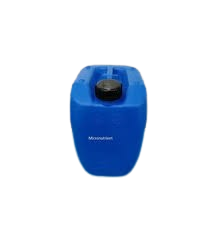Micro Neutriant
Home » Micro Neutriant
Gem Chemicals
Micronutrients

Micronutrients
Micronutrients are essential elements required in trace amounts for the optimal growth and functioning of microorganisms in biological treatment processes. While macronutrients like nitrogen and phosphorus are needed in larger quantities, micronutrients such as metals and vitamins play a critical role in supporting various enzymatic and biochemical reactions within microbial cells.
Micronutrients are essential for the optimal performance of microorganisms in effluent treatment plants (ETPs). Key micronutrients such as iron, zinc, copper, manganese, cobalt, nickel, and molybdenum support various enzymatic and biochemical processes crucial for wastewater treatment. Proper dosage calculation, application, and monitoring are crucial to ensure effective micronutrient supplementation and avoid environmental impacts. Handling and storage of micronutrients require care to prevent irritation and maintain their effectiveness.
Micronutrients are essential for the optimal performance of microorganisms in effluent treatment plants (ETPs). Key micronutrients such as iron, zinc, copper, manganese, cobalt, nickel, and molybdenum support various enzymatic and biochemical processes crucial for wastewater treatment. Proper dosage calculation, application, and monitoring are crucial to ensure effective micronutrient supplementation and avoid environmental impacts. Handling and storage of micronutrients require care to prevent irritation and maintain their effectiveness.
Key Micronutrients in ETP
Iron (Fe):
- Essential for the synthesis of cytochromes and other iron-containing enzymes involved in cellular respiration and electron transport.
- Promotes the growth of nitrifying bacteria, which are important for the nitrogen cycle in wastewater treatment.
Zinc (Zn):
- Acts as a cofactor for numerous enzymes, including those involved in protein synthesis and DNA replication.
- Important for the stability and functionality of microbial cell membranes.
Copper (Cu):
- Involved in electron transport and redox reactions within cells.
- Required for the activity of enzymes such as cytochrome c oxidase and superoxide dismutase.
- Manganese (Mn):
- Functions as a cofactor for enzymes involved in metabolic processes, including the decomposition of organic matter.
- Plays a role in protecting cells from oxidative stress.
Cobalt (Co):
- Essential for the synthesis of vitamin B12, which is crucial for the metabolism of certain amino acids and the synthesis of nucleotides.
- Supports the growth of methanogenic bacteria in anaerobic treatment processes.
Nickel (Ni):
- Required for the activity of certain hydrogenase enzymes and urease.
- Important for the growth of specific microorganisms involved in methane production and urea hydrolysis.
Molybdenum (Mo):
- Acts as a cofactor for enzymes involved in nitrogen metabolism, including nitrate reductase and nitrogenase.
- Supports the growth of denitrifying bacteria.
Application of Micronutrients in ETP
- Dosage Calculation:
- Based on Wastewater Characteristics: The concentration of micronutrients required depends on the specific composition of the wastewater and the microbial population present.
- Monitoring: Regular monitoring of the wastewater and sludge for micronutrient content helps in determining the necessary supplementation.
Feeding Method:
- Solution Addition: Micronutrients are often added in the form of a solution to ensure even distribution.
- Direct Addition: Micronutrient solutions can be added directly to biological treatment units such as aeration tanks, bioreactors, or anaerobic digesters.
Mixing and Distribution:
- Thorough Mixing: Ensure that the micronutrient solution is well mixed and evenly distributed throughout the treatment process to maximize its effectiveness.
Monitoring and Adjustment:
- Regular Monitoring: Continuously monitor the levels of micronutrients in the wastewater to ensure that the microbial population is receiving adequate nutrition.
- Adjust Dosage: Based on monitoring results, adjust the micronutrient dosage to maintain optimal levels and support efficient biological treatment.
Handling and Safety
- Storage: Store micronutrient solutions in a cool, dry place, protected from moisture and direct sunlight. Ensure that storage containers are sealed properly to prevent contamination and degradation.
- Handling: Use personal protective equipment (gloves, masks, goggles) to avoid contact with skin and eyes. Some micronutrients can be irritating if inhaled or if they come into contact with the skin.
- Safety: Follow safety guidelines and Material Safety Data Sheets (MSDS) for each specific micronutrient to prevent accidents and ensure safe handling.




